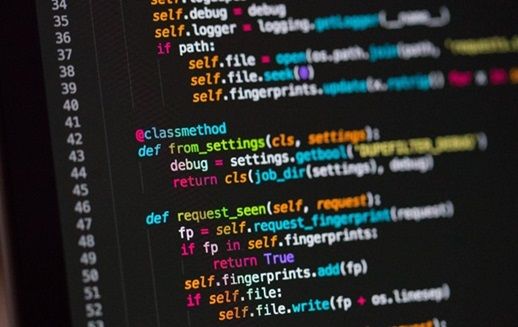Mastering Efficiency: Transfer Learning in Python and the Art of Leveraging Pre-trained Models for New Tasks
Transfer learning emerges as a key technique in machine learning for enhancing efficiency and accuracy by adapting pre-trained models to new tasks, with Python as the prime language for its implementation.

In the ever-evolving landscape of machine learning, the quest for efficiency and accuracy is relentless. Transfer learning, a technique that leverages pre-trained models to solve new, similar tasks, stands out as a powerful strategy. Python, being a versatile and widely adopted language in the realm of machine learning, provides an ideal environment for implementing transfer learning techniques. In this article, we'll explore the intricacies of transfer learning, its applications, and the art of harnessing pre-trained models in Python for a variety of new tasks.
Understanding Transfer Learning
Transfer learning is a paradigm in machine learning where a model trained on one task is repurposed to work on a second, related task. The core idea is that knowledge gained while learning one task can be applied to a different but related task. This approach is particularly beneficial when labeled data for the target task is limited, as it allows the model to leverage knowledge learned from a larger dataset in a source task. By the way, if your company is thinking about hiring Python developers, you can definitely reach out to Lemon.io.


The Transfer Learning Workflow in Python
1. Selecting a Pre-trained Model
The first step in transfer learning is to choose a pre-trained model. Pre-trained models are trained on large datasets for common tasks such as image classification or natural language processing. Popular choices include VGG16, ResNet, and BERT. In Python, libraries like TensorFlow and PyTorch provide easy access to these pre-trained models.
2. Understanding Model Architecture
Once a pre-trained model is selected, it's crucial to understand its architecture. This involves examining the layers, parameters, and the specific task it was originally designed for. Familiarizing oneself with the model's structure is essential for effective transfer learning.
3. Modifying the Model for the New Task
The next step is to adapt the pre-trained model to the specifics of the new task. This often involves modifying the final layers of the model to match the number of classes in the target task. In Python, frameworks like TensorFlow and PyTorch provide APIs for model modification and customization.
4. Feature Extraction
One common approach in transfer learning is feature extraction. This involves using the pre-trained model as a fixed feature extractor, where the early layers of the model are frozen, and only the final layers are adapted to the new task. This way, the model retains the knowledge learned from the source task while adjusting to the nuances of the target task.
5. Fine-tuning
Another strategy is fine-tuning, where not only the final layers but also some of the earlier layers are adapted to the new task. This allows the model to adjust its weights more flexibly based on the target task's data. Fine-tuning is often beneficial when the source and target tasks are closely related.

Applications of Transfer Learning in Python
1. Image Classification
Transfer learning has proven highly effective in image classification tasks. Pre-trained models trained on massive image datasets, such as ImageNet, can be repurposed for specific image classification tasks in Python. This is particularly valuable when dealing with limited labeled data for a specific domain.
2. Object Detection
For tasks involving object detection in images, transfer learning accelerates the training process. Pre-trained models like Faster R-CNN or YOLO can be fine-tuned on datasets with a smaller number of object classes, making them adept at detecting objects specific to the target task.
3. Natural Language Processing (NLP)
In the realm of NLP, pre-trained language models like BERT and GPT have revolutionized transfer learning. Python libraries such as Hugging Face's Transformers facilitate the use of these models for a variety of NLP tasks, including sentiment analysis, text classification, and named entity recognition.
4. Speech Recognition
Transfer learning is also making strides in speech recognition tasks. Pre-trained models trained on large-scale speech datasets can be adapted to recognize specific voices or languages using Python frameworks like TensorFlow or PyTorch.
5. Medical Imaging
In the field of medical imaging, transfer learning has shown promise. Pre-trained models can be applied to tasks such as tumor detection or organ segmentation with minimal labeled medical data, offering potential breakthroughs in diagnostics.

Python Libraries Facilitating Transfer Learning
1. TensorFlow
TensorFlow, an open-source machine learning framework, provides a wealth of pre-trained models through its TensorFlow Hub. This repository includes models for image classification, object detection, and more. TensorFlow also offers tools for model customization and transfer learning workflows.
2. PyTorch
PyTorch, another popular deep learning framework, has a torchvision library that includes pre-trained models for image classification and object detection. PyTorch allows for flexible model modification and fine-tuning, making it a preferred choice for researchers and practitioners.
3. Hugging Face's Transformers
Hugging Face's Transformers library is a treasure trove for NLP tasks. It provides easy access to pre-trained models like BERT, GPT, and T5, streamlining the implementation of transfer learning in Python for a wide range of natural language processing applications.
4. Keras Applications
Keras, a high-level neural networks API, offers the Keras Applications module, which includes pre-trained models like VGG16, ResNet, and MobileNet. This module simplifies the process of loading and using these models for various computer vision tasks in Python.

Challenges and Considerations in Transfer Learning
While transfer learning is a powerful approach, it's not without challenges. Some considerations when applying transfer learning in Python include:
- Domain Shift: The source and target tasks should be closely related to ensure transfer learning effectiveness. A significant domain shift may lead to suboptimal performance.
- Overfitting: When adapting a pre-trained model to a new task, there's a risk of overfitting, especially when dealing with limited labeled data. Techniques such as regularization and data augmentation can mitigate this challenge.
- Model Size: Pre-trained models can be large, requiring significant computational resources for fine-tuning or feature extraction. Efficient handling of model size is crucial for practical implementation.

Conclusion: Python's Role in Elevating Transfer Learning
In the dynamic landscape of machine learning, transfer learning has emerged as a beacon of efficiency, allowing practitioners to leverage the knowledge encoded in pre-trained models for new and diverse tasks. Python, with its rich ecosystem of libraries and frameworks, serves as an ideal companion in this journey. Whether it's image classification, NLP, or other specialized domains, Python provides the tools and flexibility needed to implement transfer learning seamlessly.
As the field continues to evolve, transfer learning in Python stands at the forefront of innovation, enabling practitioners to push the boundaries of what's possible. By understanding the nuances of transfer learning workflows, selecting the right pre-trained models, and navigating the challenges, Python developers can harness the power of transfer learning to create more efficient, accurate, and adaptable machine learning systems. In the ever-evolving landscape of AI, transfer learning in Python is not just a technique; it's an art form, unlocking new possibilities and shaping the future of machine learning.
